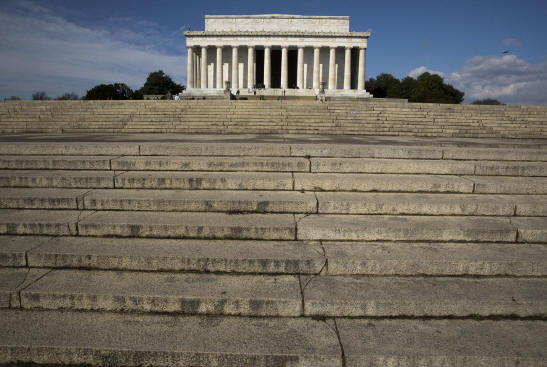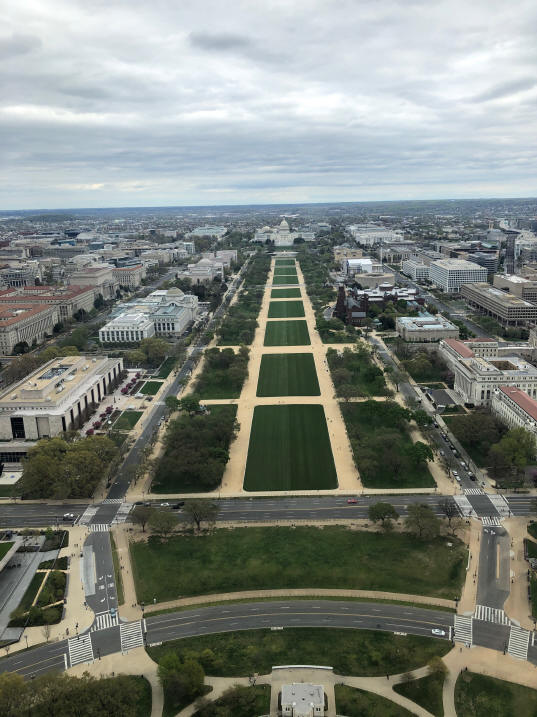The sound of silence
Tim Iverson
Naturalist
(5/2020) National parks are scattered across the country. They represent the best examples of specific and unique landscapes. They tell the stories of events that have occurred. There are tangible objects for the senses to soak in, mountains to climb, history to walk through, or wildlife to observe. In the heart of the nation’s capital city lies the
National Mall and Memorial Parks. However, this park is different from the other parks in the system. It doesn’t hold any of those things. It holds ideas. It’s a tribute to some of our most formative people, events, and movements.
This two-mile stretch of green in the heart of Washington, DC is anchored on one end by the United States Capitol building and on the other by the Lincoln Memorial. Along that expanse the Mall is bordered by American Elm trees and institutions showcasing the soul and intellect of a nation. American poet Walt Whitman once described it as a "democratic
vista, where the American people assemble to play, attend cultural events, or petition the government for change."

Commonly referred to as the nation’s front yard, the Mall is our nation’s premiere civic space. Originally envisioned by architect Pierre L’Enfant, the seat of a new government had never before had the opportunity to plan its capital city. In 1790 his plan of a federal triangle created by the Capitol, White House, and Mall was adopted. The space that
would become the Mall was intended to be a grand avenue for citizens to gather.
And gather they have. Over the course of our history the First Amendment right "...to peaceably assemble and petition the government for a redress of grievances," has been demonstrated in truly remarkable civic fashion. The 1963 March on Washington for Jobs and Freedom left an indelible mark on the consciousness of the country as we dreamed of a better
world. The March is most often remembered for Martin Luther King Jr’s "I have a dream speech" where he envisioned a more equitable future for all Americans.

On the Mall, we celebrate our independence every year and the democratic will of the electorate every four with the Inauguration of a President. Afternoons typically feature throngs of tourists jetting from landmark to landmark, while locals assemble for recreational picnics and pickup games of flag football, ultimate frisbee, kickball, and more.
Within the backdrop of a major metropolitan area, it’s hard to remember that this iconic landscape is also a national park.
With the recent developments of COVID-19, the roar of a city has dwindled to a whisper. The place set aside for Americans to gather has become largely devoid of people. Many national parks across the country have shuttered, for good reason, but the logistics of closing open field space and memorials is challenging. With the current guidance and urging
from public officials of maintaining distance and self-protective measures the park has remained largely open and accessible. However, fewer visitors mean that finding solitude in the heart of the urban jungle, which was once considered impossible and incomprehensible, is now common.
The haunting faces of stone soldiers from the Korean War Memorial seem to call out in an ethereal calm. The visage of Thomas Jefferson stands alone across a serene tidal basin. President Abraham Lincoln, from the interior of his memorial chamber, gazes out to a reflecting pool devoid from the usual masses. The Vietnam Veterans’ War Memorial solemnly
bears witness, while the Washington Monument grasps towards a sky blanketing a nation in the infirmary.
The triumphs of the people and events ensconced in stone is a testament to the strength and character of our nation. Their poise and sacrifice to the greater good is our inspiration. Citizenship calls each of us to bear each other's burden and move forward. While we as a people are recovering so too is the landscape.

Once timid and generally unseen, urban wildlife is making their presence known. The red fox, who are excellent scavengers and adaptable generalists, have forged further into a silent city. Rodents that have come to depend on the generosity and waste of tourists have scattered to where other food sources can be found. The grass of the Mall, stretching
from 3rd to 14th Streets, is greener and lusher than anytime in recent memory with the lack of foot traffic and casual sports bearing down upon it. Current air quality rates are recorded as being the cleanest in a generation. Fleeting and ephemeral flowers found in the Floral Library are lasting a little longer this year. Delicate beds showcasing tulips near the Washington
Monument have avoided the trampling feet of interlopers seeking social media moments.
With any change there will always be winners and losers. Those who can adapt and overcome will find opportunities. The Cherry Blossom Festival may have been cancelled this year, but the trees themselves bloomed despite it all. The natural world is resilient. So are we. As the plants, animals, and the park adapt to these new found opportunities and
challenges they’re a bit more prepared for what comes next.
At some point, we will end up on the other side of this pandemic. These monuments and memorials commemorate our better angels and ideas. They stand as tribute to our ideals and virtue. Hopefully when we do emerge, we will be a little wiser, a little stronger, and a little more compassionate. One day in the near future we will have the opportunity to
once again come together in these shared sacred spaces to play, demonstrate, and engage in civic and cultural celebrations.